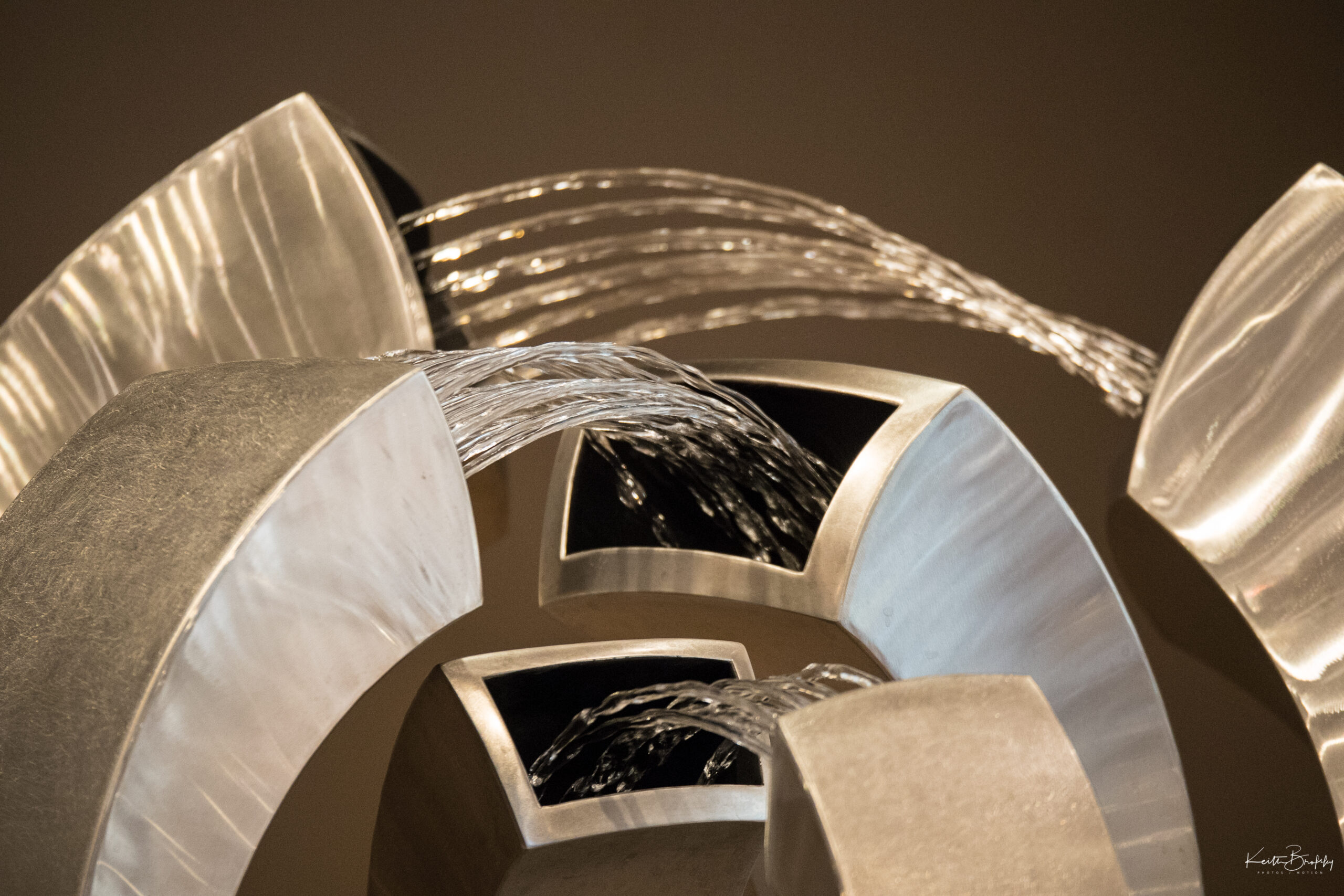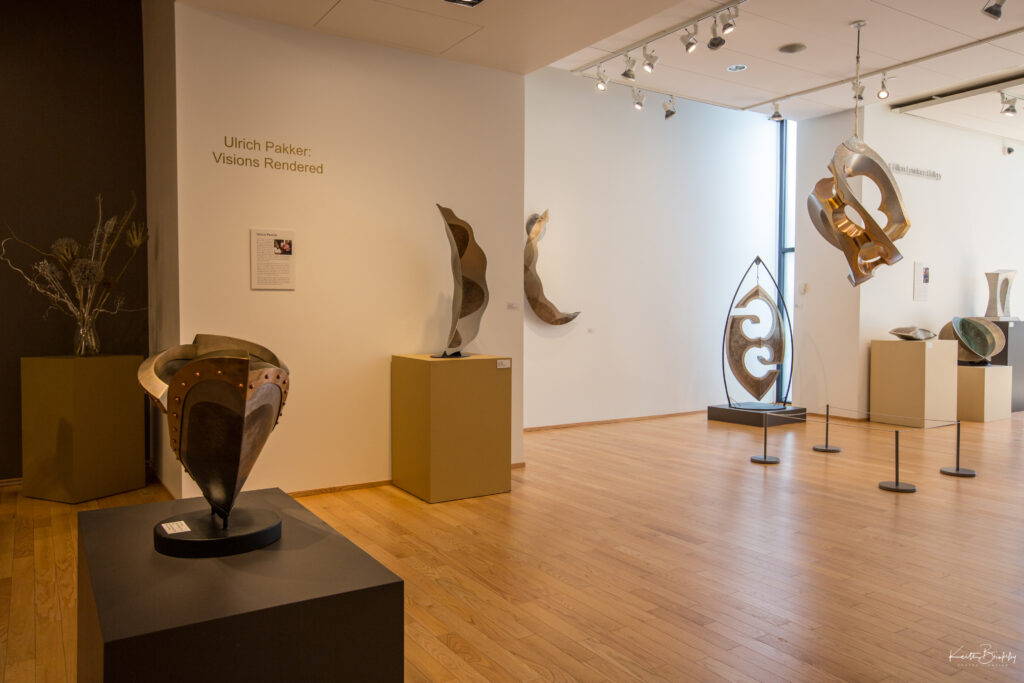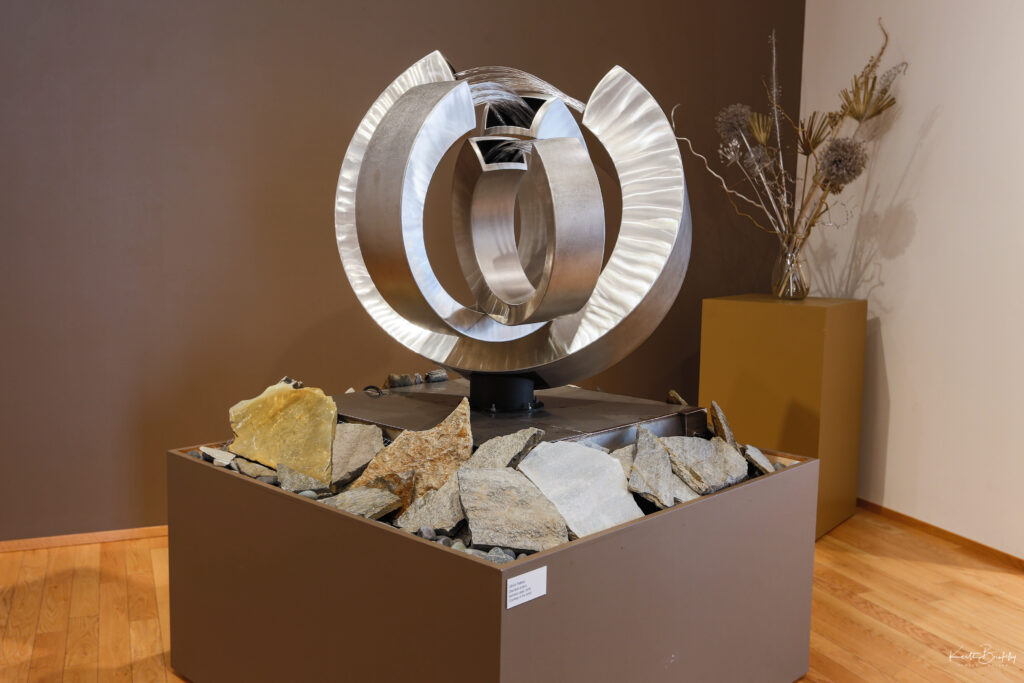
Ulrich Pakker: Visions Rendered
Past Exhibition
Ulrich’s early, traditional vessels and hollowware sculptures drew attention, especially from architects in Seattle. They urged him to expand his artistic vocabulary – to create more contemporary and abstract forms…and to make them much larger! He was encouraged to think in terms of creating an ‘environment’ and not just a piece to sit on a pedestal.
Nebula Torcida, an 8-foot high stainless steel sculpture in the Microsoft collection, began a new confluence of organic shapes and monumental dimensions, gathering up the viewer in a tornado of stainless steel and swirling shapes. Over the last ten years, Ulrich has introduced other materials into his projects. Water, glass and LED lights have entered his palette, enhancing his art with elements of balancing circlets and kinetic movement. Tying these elements all together challenges him to change his perspective again and again.
Greater recognition of Ulrich’s artwork came in November 2013 in the form of an art award given out by the U.S. National Commissioner to the United Nations Educational, Scientific and Cultural Organization (UNESCO), Dr. Sheree Wen. The 2013 award, “Inspiring Peace and Humanity through Art and Science” celebrates Ulrich’s latest monumental sculpture installation, Breaking Earth’s Bond, installed near the gateway of the Redstone Arsenal in Huntsville, Alabama. The work, comprised of Trajectory, Bridge and Hydrazine, relates a flowing, visual narrative of the personal and institutional histories of the Huntsville region, of the Saturn and Apollo space missions and aerospace exploration. Here, natural forces intertwine with human structures in homage to humanity’s striving to reach the unknown.
Right after the UNESCO award, Ulrich installed another public art commission: Changing Gears. The five-piece sculptural grouping creates an intimate space, a living room for Crystal Park in Lancaster, Pennsylvania. Ulrich introduced new components: interactive lighting; water-flows drawn from a storm water management system; and iconic images from the neighborhood’s history of beer- and watch-making. This narrative has contributed to Ulrich developing a visual lexicon to create ‘place-making’ art.
Ulrich’s artistic journey always involves risk, persistence and long-term vision. With his installations, he transforms public sites into community places. With his smaller works, he uses familiar shapes to catalyze the viewers’ relationships to his work. By harnessing the energies and materials ricocheting around his studio, he instigates dialogue, makes memories and establishes a connection between the site, the installation and the viewers.
Biography:
Ulrich Pakker was born in 1951 in Essen, Germany. He grew up in a post-World War II, bombed out industrial city undergoing a massive rebuilding effort – making innovation and problem-solving a part of his life. At age 14, he began an apprenticeship in working sheet metal. He learned the basics of drafting, layout and materials. He began to build his skill set, his work ethic, and a sense of aesthetics involving meticulous craftsmanship. In these early years he developed a fascination with the curvilinear form.
He came to the United States in search of the sort of freedom only found in the High Sierra and on fishing boats in the Bering Sea. In a small Eskimo village on the Arctic Circle, Ulrich began his art journey, carving tiny vessels and jewelry out of fossilized walrus ivory. These early artworks were inspired by the wilderness and the people of Alaska. He immersed himself in visual narratives spoken through carved ivory. Ulrich’s self-awareness as an artist began to take shape.
When he moved to Seattle he met and married his muse, Pamela. They work together, he in the studio conceptualizing forms, and she at the computer, collaborating with 3-dimensional modeling tools to help resolve design and feasibility issues. Final organic shapes are executed in stainless steel and bronze.
Ulrich Pakker, Drunken Lotus, 2017. Photo by Keith Brofsky.
When
Where
Share



